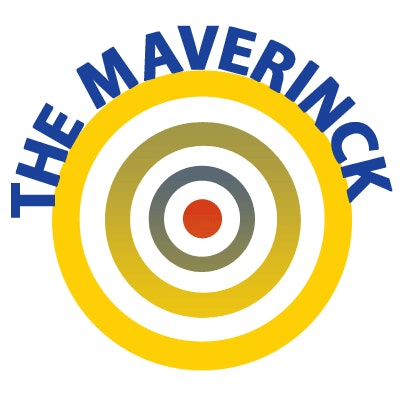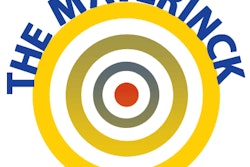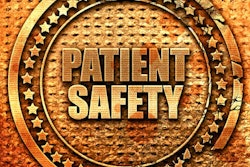
There is not much innovation in the clinical use of MR contrast agents, but numerous "market reports" have been released during recent years predicting a roaring future -- although they were mostly written by people without deep insight into the field.
These reports are each being offered at prices of several thousand euros or U.S. dollars. According to the authors, the future of the MRI contrast agent market is bright, most of the big companies have just introduced new agents, and at least a 4% annual increase in sales can be expected.
Thus, these reports are as accurate as today's weather forecast for February 2031. It is rumored that their publishers also sell market forecasts for bitter orange marmalade for 2022-2031 -- same predictions, same bitter aftertaste.
According to these reports, the so-called “new” agents are generics, mostly copies of Gd-DOTA, the "Dotarem" the French company Guerbet brought out more than 30 years ago. The novel trade names are different, but this is how far novelty goes.
 Dr. Peter Rinck, PhD.
Dr. Peter Rinck, PhD.Ongoing research in the field of MRI contrast agents at universities and other research institutions paint a different picture: There are plenty of ideas and developments that are applicable for biomedical research, but not for clinical life. Among them are compounds capable of being activated by outside factors and targeted ones; they all seem to function nicely in animal models. An excellent 100-page overview was given by a research group at MGH / Harvard Medical School in 2019.1 A shorter and more clinical basic introduction to MR contrast agents was published in 2021 by The Round Table Foundation (TRTF) and European Magnetic Resonance Forum (EMRF).2
Still, no new products have reached the market; on the contrary, a number of approved compounds were withdrawn because they didn't sell. Others -- linear gadolinium-based agents -- had to be removed because they were considered a risk for patients after the overdosing of gadolinium compounds led to the nephrogenic systemic fibrosis (NSF) scandal.3
Gadolinium deposits have also been found in other body tissues, yet there is currently no evidence that gadolinium deposition in the brain has caused any harm to patients. In 2019, a major study provided evidence from a large animal model that linear gadolinium-based contrast agents leave traces of gadolinium within the deep cerebellar nuclei, while there was no significant difference of gadolinium residue between three macrocyclic agents marketed in Europe and a saline control group.4
The European Medicines Agency (EMA) recommended restrictions and suspensions for some intravenous linear agents in order to prevent any risks that could potentially be associated with gadolinium brain deposition. EMA stated that the intravenous linear agents gadoxetic acid and gadobenic acid can continue to be used for liver scans because they are taken up in the liver and meet an important diagnostic need. All other intravenous linear products (gadodiamide, gadopentetic acid, and gadoversetamide) are suspended in the European Union.5
On the other hand, the U.S. Food and Drug Administration did not restrict any gadolinium-containing agents.6 Only the intravenous linear blood pool agent Gadofosveset trisodium (also known as Ablavar or Vasovist) was withdrawn from the U.S. market; the manufacturer discontinued production in 2017 due to poor sales.
Safety matters
Gadolinium contrast agents are still the safest contrast agents one can use in diagnostic imaging -- far safer than x-ray agents. The dream of some of the early developers to create outstanding and safe contrast enhancers was destroyed by corruption sprees and greedy abuse of the gadolinium agents. Their reputation was severely damaged by avarice and depravity on the one hand and, on the other, by cheap sensationalism in the media.7,8
The main question is if there is room for a new agent today or in the future -- and if so, how and why -- when the remaining gadolinium chelates are so universal in terms of their application.
Gadolinium extracellular fluid agents are the only ones that have grown into a realistic market size. Thus, it will be extremely difficult to develop a new MR contrast agent that fulfills unsatisfied clinical needs and has a large enough range of application to justify development.9 New agents for liver or pancreas imaging may have difficulties to gain a foothold.
The global market value of gadolinium contrast agents still is in the billions of dollars per year, although it shrunk in the U.S. between 2019 and 2020 from more than $500 million to about half that sum. It contracted significantly during the COVID-19 lockdowns, and the market has not yet returned to prepandemic levels.
There is, of course, the financial inducement. The U.S. market is huge, and the retail prices of contrast agents are high. Generally speaking, prescription drug prices in the U.S. are 2.5 times the prices elsewhere, and the gap between prices in the U.S. and other countries is even larger for brand-named drugs, with U.S. prices averaging 3.44 times those in comparison nations. A recent study by the Rand Corporation found that among G7 nations, the U.K., France, and Italy generally have the lowest prescription drug prices, while Canada, Germany, and Japan tend to have higher prices, but still far below those in the U.S.10
For connoisseurs and lovers of obscure statistics, average life expectancy in years in these countries is as follows: Japan, 85 years; Italy, 84.1; France, 83.1; Canada, 83; Germany, 81.9; U.K., 81.8; and U.S., 79.1.
Reimbursement
Until some five years ago, reimbursement of contrast agents by health agencies and insurance companies was generally generous -- a number of people took advantage of this behavior. The sums involved were horrendous. Then the evidence trickled down to the media and the public. One corruption scandal followed the next.
As a result, in Germany for instance, reimbursement by the local Statutory Health Insurances dropped substantially. Originally, these insurance companies used to reimburse between 3,900 and 6,000 euros per one liter of contrast agent (50 doses) to the manufacturer or wholesaler; since 2019, only 970 euros are reimbursed. Probably only 700 euros per liter will be paid in the future. However, the 10% of the population who are not members of the national insurance scheme and are covered by private insurance coverage continue paying substantially more per contrast-enhanced MR examination.
In some parts of Germany, radiologists are not allowed to decide which contrast agent they can use, and they are not told how much it costs. It's a secret between the local Statutory Health Insurance and the company delivering the agent. Again, venality is part of the game.
Lower reimbursement discourages the clinical development of new agents since it requires tens, perhaps hundreds of millions of euros for the preclinical and clinical studies in humans. More so, compared with 30 years ago, the registration authorities demand far more stringent safety studies. There is also a simple rule: The better the specificity, the smaller the market will be -- and the smaller the market, the higher the price per dose has to be -- and higher prices might be an insurmountable obstacle.
Thus, there is the attractive idea of applying new paradigms to already approved agents that were withdrawn from the market before the gadolinium phobia, such as the use of Mn-DPDP for cardiac and brain applications and ferumoxtran for the enhancement of metastases. New patents cover these new applications. In these cases, reintroduction should be less complicated -- but apparently, it still is rather expensive and very time-consuming.
At the same time, the equipment manufacturers are doing everything they can to come up with noncontrast agent alternatives. In addition, artificial intelligence applied to imaging looks set to change the goalposts, both in terms of diagnosis and in highlighting subtle differences and abnormalities. This technology will be fully integrated with the equipment.
Another question is what will be the clinical need for imaging agents when in vitro diagnostics begins to provide useful information. Advances in gene sequencing and in molecular biology underline the significance and impact of linking diagnostics and biotechnology, for instance in the identification of cancer from blood samples. Long-term thinking is not the business approach of many companies, but some invest in innovative lateral thinking, hoping and already seeing commercial success.
Dr. Peter Rinck, PhD, is a professor of radiology and magnetic resonance and has a doctorate in medical history. He is the president of the Council of The Round Table Foundation (TRTF) and the chairman of the board of the Pro Academia Prize.
The comments and observations expressed herein do not necessarily reflect the opinions of AuntMinnieEurope.com, nor should they be construed as an endorsement or admonishment of any particular vendor, analyst, industry consultant, or consulting group.
References
- Wahsner J, Gale EM, Rodríguez-Rodríguez A, Caravan P. Chemistry of MRI contrast agents: Current challenges and new frontiers. Chem Rev. 2019; 119(2): 957-1057. doi:10.1021/acs.chemrev.8b00363.
- Rinck PA. Contrast agents in magnetic resonance imaging. Free offprint from: Magnetic Resonance in Medicine: A Critical Introduction. The Basic Textbook of the European Magnetic Resonance Forum. Preprint of the 13th edition. 2021.www.trtf.eu/textbook.htm
- Rinck PA. Gadolinium -- will anybody learn from the debacle? Rinckside 2015; 26,9: 23-26. http://www.rinckside.org/Columns/2015%2011%20Gadolinium.htm
- Radbruch A, Richter H, Fingerhut S, Martin LF, Xia A, Henze N, Paulus W, Sperling M, Karst U, Jeibmann A. Gadolinium deposition in the brain in a large animal model – Comparison of linear and macrocyclic gadolinium-based contrast agents. Invest Radiol. 2019; 54: 531–536.
- European Medicines Agency. EMA's final opinion confirms restrictions on use of linear gadolinium agents in body scans. Recommendations conclude EMA's scientific review of gadolinium deposition in brain and other tissues. 20 July 2017. https://www.ema.europa.eu/en/medicines/human/referrals/gadolinium-containing-contrast-agents
- FDA Drug Safety Communication: FDA identifies no harmful effects to date with brain retention of gadolinium-based contrast agents for MRIs; review to continue. 19 December 2017. https://www.fda.gov/drugs/drug-safety-and-availability/fda-drug-safety-communication-fda-identifies-no-harmful-effects-date-brain-retention-gadolinium
- Rinck PA. Adding fuel to the flames: Gadolinium -- the German follow-up. Rinckside 2016; 27,1: 1-3. http://www.rinckside.org/Columns/2016%2003%20German%20follow%20up.htm
- Rinck PA. German newspapers and the gadolinium controversy. Rinckside 2018; 29,3: 7-8. http://www.rinckside.org/Columns/2018%2004%20German_newspapers.htm
- Rinck PA. MR Imaging: Quo Vadis? Rinckside 2019; 30,3: 5-8. http://www.rinckside.org/Columns/2019%2003%20MRI%20quo%20vadis.htm
- The Rand Corporation (Mulcahy AW). Prescription drug prices in the United States are 2.56 times those in other countries. https://www.rand.org/news/press/2021/01/28.html



















